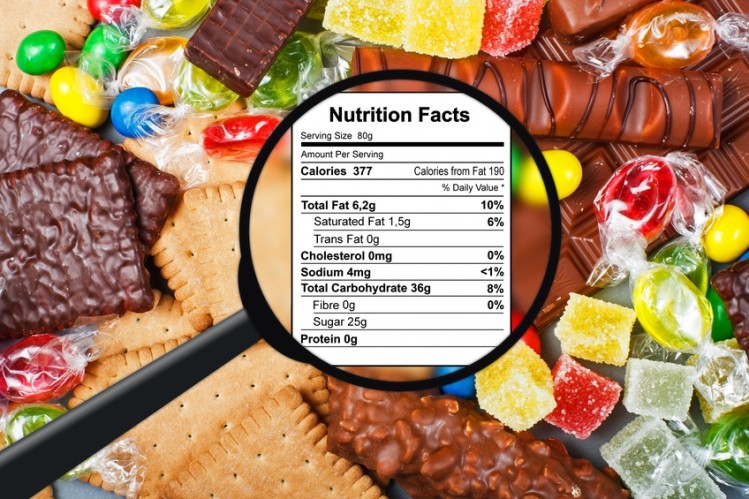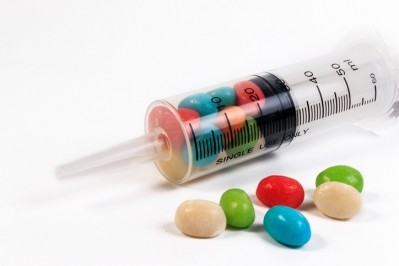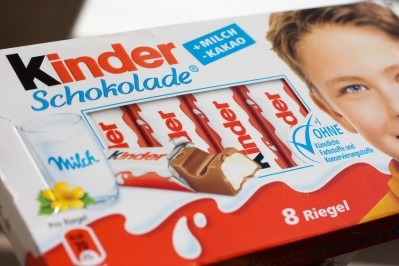Confectionery industry open to pan-EU 250 calorie cap per portion

Ferrero says it has already gone further with a 130 kcal per portion cap on any new products.
Calls for industry-wide calorie caps follow a debate on portion control at the European confectionery association’s CAOBISCO’s recent annual meeting moderated by ConfectioneryNews.
Nestlé suggests calorie cap on countlines and added sugar benchmarks
Speaking during the debate, Richard Wood, nutrition, science and regulatory affairs manager at Nestlé, said the Swiss firm would welcome an open discussion with the industry on setting category specific benchmarks on calories per portion.
He later told us: “We would be happy to set a calorie cap of 250 kcal on countlines on a pan-European basis, which is something that industry has already done in the UK.
Calories in Nestlé snacks
Portion sizes for Nestlé products intended as snacks must contain 10% of a person’s recommended daily energy intake, which is 70 kcal for children and 200 kcal for adult females.
“Beyond this we are also open to establishing benchmarks on added sugars.”
He said during the debate: “I would say we should focus on calories. Because the reality is it's over-consumption of calories from added sugars that's the issue, it's not sugar itself."
Ferrero: 130 kcal cap on NPD
Roberto Menta, director of nutrition & sustainability at Ferrero's subsidiary Soremartec, told this site Ferrero had already gone further than a 250 kcal cap per portion.
Almost 70% of Ferrero products in 2014/2015 were under 100 kcal per portion and any new products must be below 130 kcal for single wrapped portions.
“There are still some exceptions but they are related to historical products and in any case the portion is suitable for the reference target according to age and nutritional needs.”
Three per cent of Ferrero's portfolio was over 200 kcal in 2014/15 and 26.8% was between 100 and 200 kcal per potion.
Mars: Industry should align
Rob Verhagen, global director for health & wellbeing at Mars Chocolate, said it was important for the industry to align.
“The first area to do this would be in the area of banning the use of industrially produced trans fatty acids from the industry.
“A 250 kcal calorie cap/ portion could be an interesting step to level the playing field which would be interesting to discuss in a trade association,” he said.
Mars committed to developing single serving sizes of less than 250 kcal in 2010.
Mondelēz would welcome alignment
A Mondelēz spokesperson said: “As the role Portion Control products play is very important, we welcome further work with peer companies on aligning an approach, both on product improvement and consumer information/education that is meaningful for consumers.”
The Cadbury and Milka maker has pledged to grow ‘Portion Control’ products within its portfolio by 25% until 2020.
It defines Portion Control products as individually wrapped products that have 200 calories or less.
Portion size rules and regulations
In Europe, portion sizes are set by branded manufacturers rather than the European Food Safety Authority (EFSA).
From December this year, European firms must list nutrition criteria by portion as well as per 100 g, under the incoming Food Information for Consumers (FIC) regulation.
The European Commission encourages companies to take account of actual consumption behavior as well as dietary recommendations and can take action for unfair business-to-consumer practices. But companies are able to determine their own portion sizes for products.
US portion size changes
In the US, the Food and Drug Administration (FDA) sets limits on grams per serving by product category.
Hard candies, except roll-type candies and breath mints, must not exceed 5 g per serving, while marshmallows must be no more than 30 g. All other candies (chocolate bars etc) must not surpass 40 g per serving.
But the FDA has recently revised serving size regulations based on updated food consumption surveys. The reference amount customarily consumed (RACC) of the “All other candies” product category will be reduced to 30 g.
The other candy categories will be unchanged, but the FDA has added a new category ‘after-dinner confectioneries’, which must not exceed 10 g per portion. Manufacturers with more than $10m in annual food sales must implement the new rules by July 26, 2018, while smaller firms (less than $10m in sales) have a year longer.













